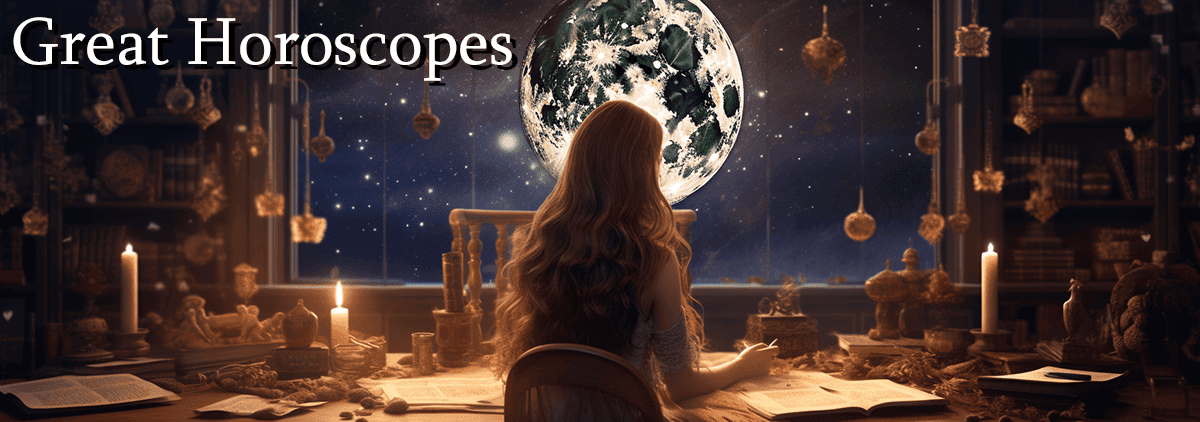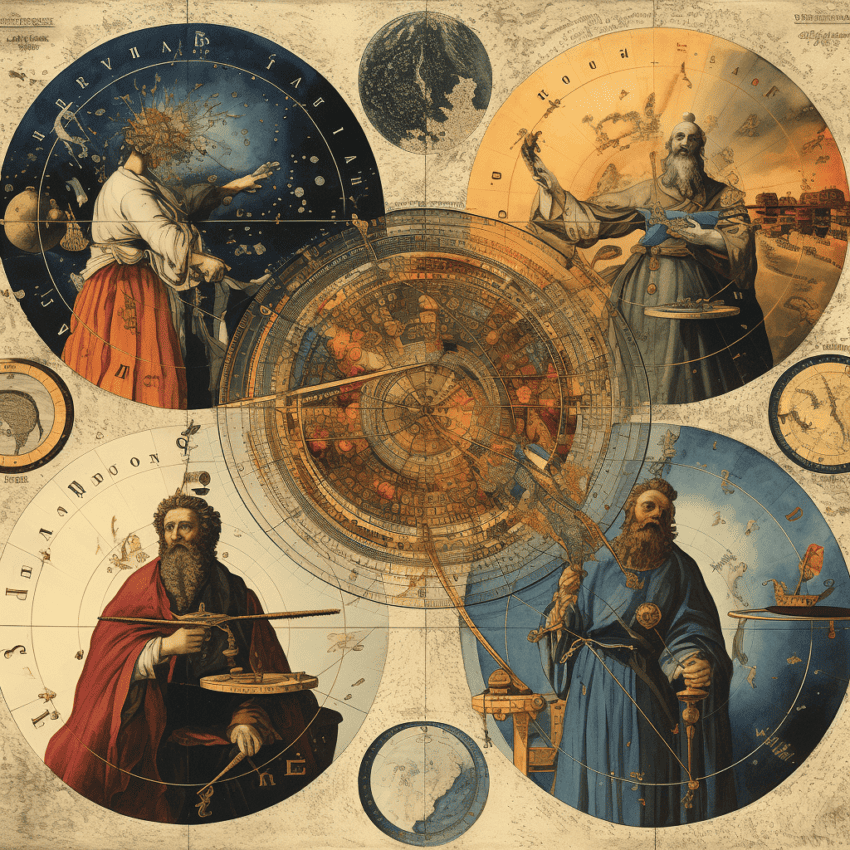The history of astrology spans millennia, evolving from ancient civilizations to modern interpretations. In antiquity, Babylonians were among the first to observe celestial patterns, connecting them to earthly events. The Egyptians incorporated astrology into their religious practices, linking it to the Nile’s flooding.
In classical Greece, scholars like Ptolemy and Hipparchus refined astrological principles. The Hellenistic period birthed horoscopic astrology, mapping planetary positions at one’s birth to discern life patterns. The Romans absorbed and modified Greek astrology, and it persisted through the Middle Ages.
During the Renaissance, a revival of interest in classical knowledge led to the integration of astrology into European intellectual circles. However, the Scientific Revolution in the 17th century marginalized astrology as astronomy advanced.
In the 19th and 20th centuries, astrology experienced a resurgence, particularly in the West. Theosophy and the New Age movement embraced astrology’s spiritual dimensions. Carl Jung explored astrology’s psychological aspects, fostering its integration into depth psychology.
Today, astrology exists in diverse forms, from traditional horoscopic readings to more psychological and spiritual interpretations. Despite skepticism, it maintains global popularity, offering insights into personality, relationships, and self-discovery. The history of astrology reflects a complex interplay of cultural, scientific, and spiritual influences, making it a dynamic and enduring facet of human understanding.
The History of Astrology: Mesopotamia and Astrology’s Early Origins.
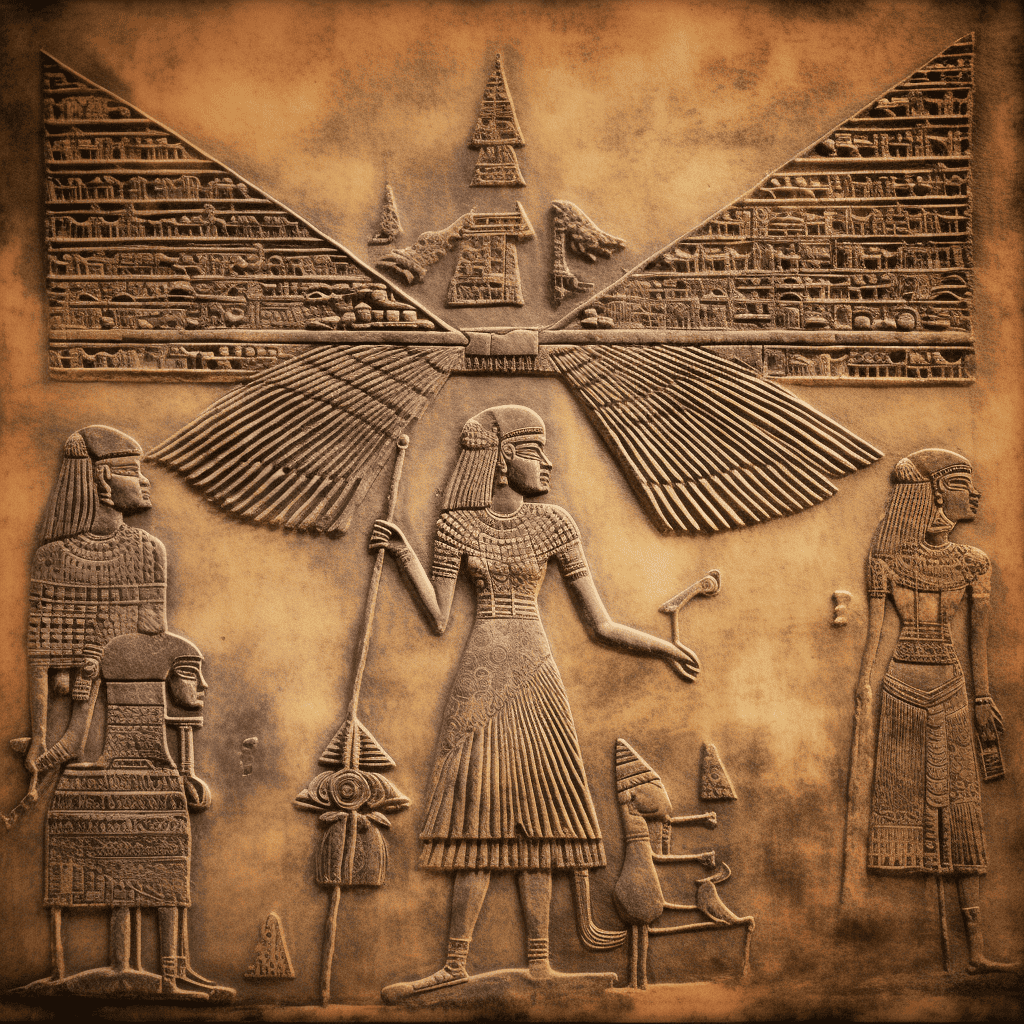
The roots of astrology can be traced back to ancient Mesopotamia, where the Babylonians, around the 2nd millennium BCE, laid the foundation for this celestial art. In this cradle of civilization, the Babylonians were keen observers of the night sky, associating celestial events with earthly occurrences.
Initially, astrology and astronomy were inseparable, and the Babylonians’ cuneiform tablets contain records of their observations of the Moon, planets, and stars. They noticed recurring patterns and established a connection between celestial movements and natural events, such as weather changes or the flow of rivers.
One of the most significant contributions was the development of zodiacal astrology. The Babylonians divided the sky into twelve sections, each associated with a specific constellation. This zodiac, which forms the basis of Western astrology, allowed them to predict the positions of celestial bodies and make astrological forecasts.
Additionally, the Babylonians created the concept of the “horoscope,” a personalized astrological chart based on the positions of the Sun, Moon, and planets at the time of a person’s birth. These early horoscopes were initially reserved for kings and rulers but later extended to individuals across various social strata.
As Babylonian culture spread, so did their astrological practices, influencing neighboring civilizations like the Assyrians and Persians. While their methods and interpretations evolved, the Babylonians set the stage for the subsequent development of astrology in different cultures throughout history. The enduring legacy of Mesopotamian astrology underscores its pivotal role in shaping our understanding of the cosmos and its impact on earthly affairs.
The History of Astrology: Astrology’s Roots in Ancient Egypt
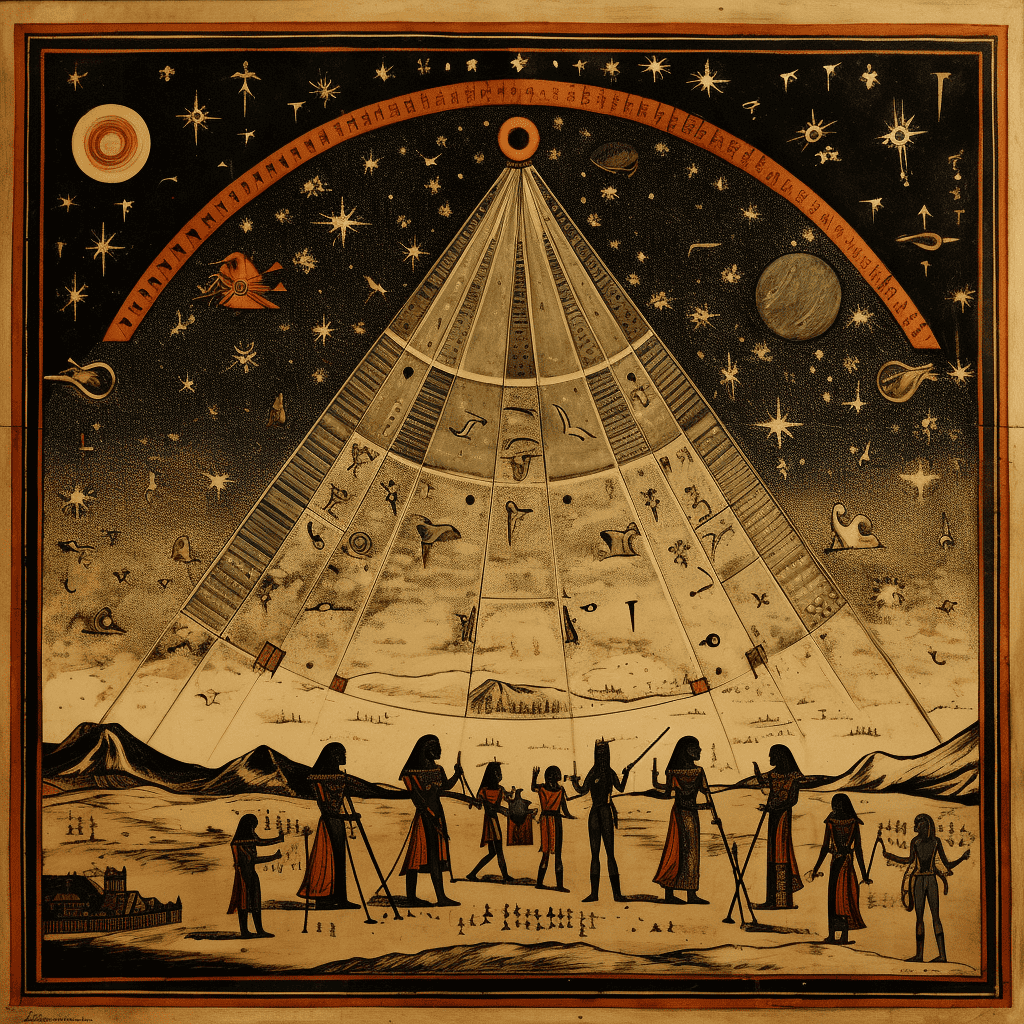
Astrology in ancient Egypt had a distinctive character, intertwining with religious and cultural beliefs. The ancient Egyptians’ fascination with the cosmos was deeply tied to their agricultural practices, religious rituals, and the concept of divine order.
The star Sirius, which rises just before the annual flooding of the Nile River, held particular significance. This heliacal rising of Sirius served as a crucial marker for the Egyptians, signaling the onset of the inundation season, vital for their agricultural calendar. The synchronization of celestial events with earthly phenomena reinforced the idea of a cosmic harmony that influenced life on Earth.
The Egyptians developed a system of decanic astrology, dividing the zodiac into 36 ten-degree segments, each associated with specific constellations. These decans were used to create a calendar linking celestial events to daily life, agricultural activities, and religious ceremonies.
Astrology in ancient Egypt also played a role in guiding decisions related to individuals. The alignment of planets and stars at the time of a person’s birth was believed to influence their personality and destiny. Pharaohs and nobles often consulted astrologers for guidance in matters ranging from governance to personal affairs.
One notable artifact is the Dendera Zodiac, a bas-relief found in the Dendera Temple complex. This ancient depiction of the zodiac reflects the Egyptians’ astronomical knowledge and symbolic connection between the celestial and earthly realms.
While not as formalized as in some other cultures, astrology in ancient Egypt was deeply embedded in the society’s fabric. The celestial bodies were seen as manifestations of gods, and their movements were considered divine messages. This integration of the cosmic and the earthly contributed to the unique character of Egyptian astrology, leaving an indelible mark on the broader history of astrological traditions.
The History of Astrology: Astrology and India
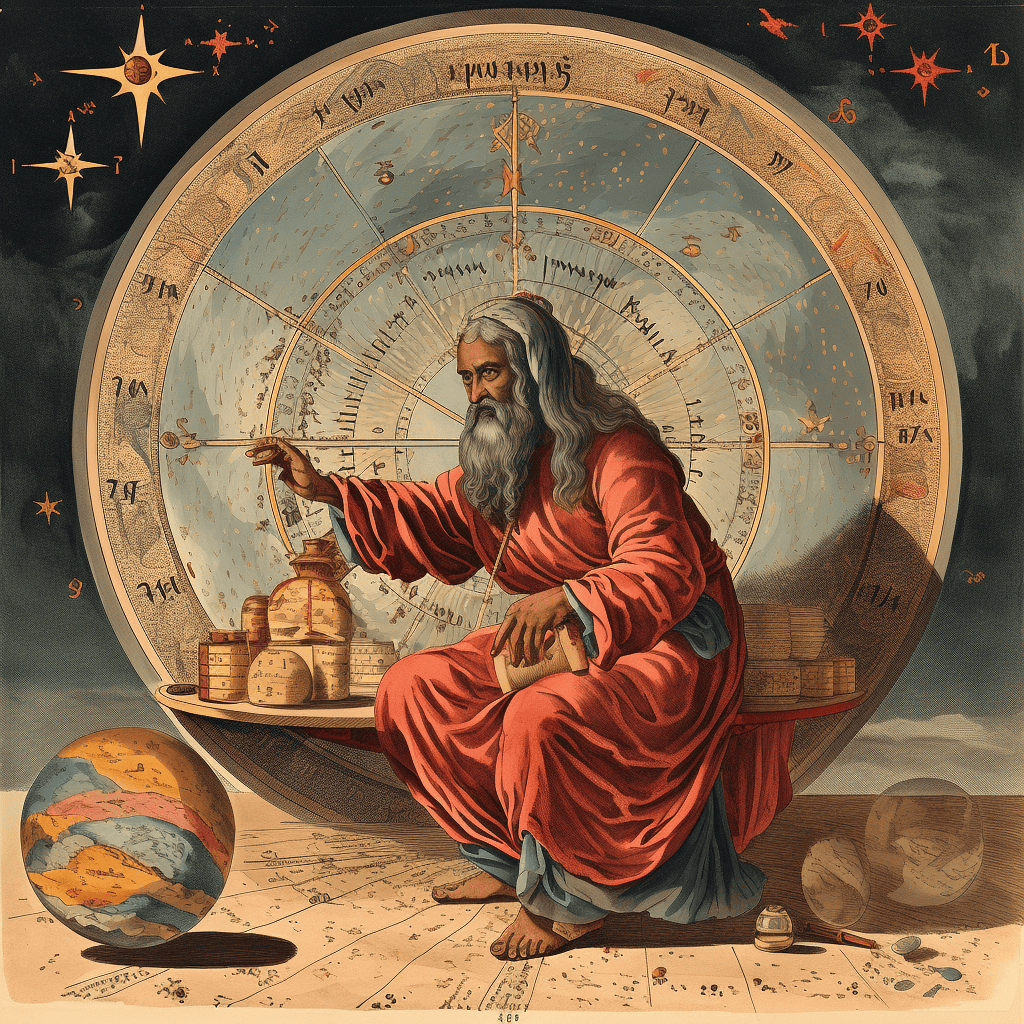
Astrology in India has a rich and ancient history, deeply interwoven with the country’s cultural, spiritual, and philosophical traditions. In India, astrology is often referred to as “Jyotish,” which translates to “science of light” or “science of heavenly bodies.” Here are some key aspects of astrology in India:
- Vedic Astrology (Jyotish): Vedic Astrology, or Jyotish, is one of the oldest and most widely practiced forms of astrology in India. It is rooted in the Vedas, ancient sacred texts that form the foundation of Hindu philosophy. Vedic Astrology emphasizes the interconnectedness of celestial bodies with human life and destiny.
- Components of Vedic Astrology: Vedic Astrology incorporates several components, including the study of the natal chart (Janam Kundli), which is a map of the celestial bodies at the time of an individual’s birth. The chart includes positions of planets, houses, and zodiac signs, providing insights into various aspects of one’s life, including personality, relationships, career, and health.
- Astrological Consultations: In India, individuals often seek astrological consultations for important life events, such as marriages, childbirth, career choices, and health matters. Astrologers analyze the birth chart to offer guidance and predictions based on planetary positions and transits.
- Muhurat or Auspicious Timing: Vedic Astrology is frequently used to determine auspicious timings (Muhurat) for significant events, such as weddings, housewarming ceremonies, and business ventures. Selecting a favorable time is believed to enhance the success and positive outcomes of these events.
- Astrology in Daily Life: Astrology is integrated into daily life in India. Many people read daily horoscopes in newspapers, and astrological advice plays a role in decision-making. Festivals and religious ceremonies often incorporate astrological considerations.
- Jataka Literature: Ancient Indian texts, known as Jataka literature, provide extensive information on astrology. These texts cover various aspects of astrology, including the interpretation of planetary influences, the significance of houses, and predictive techniques.
- Cultural Influence: Astrology is deeply ingrained in Indian culture and has influenced various other systems, including Ayurveda (traditional medicine), architecture (Vastu Shastra), and even traditional dance forms. The interconnectedness of these systems reflects the holistic approach to life in Indian philosophy.
- Renowned Astrologers: India has produced many renowned astrologers throughout history. Some of them, like Varahamihira and Bhrigu, are considered pioneers in the field. Modern astrologers continue to contribute to the practice and are often respected figures in their communities.
- Evolution and Adaptation: While rooted in ancient traditions, astrology in India has evolved and adapted to modern times. Contemporary astrologers may integrate Vedic principles with elements of Western astrology or explore new approaches, reflecting a dynamic and diverse landscape.
In summary, astrology in India, particularly Vedic Astrology or Jyotish, holds a significant place in the culture and daily life of its people. It continues to be a respected and widely practiced tradition that provides guidance and insights into various aspects of life.
The History of Astrology: The Hellenestic Period, Greece, and the Start of Horoscopes
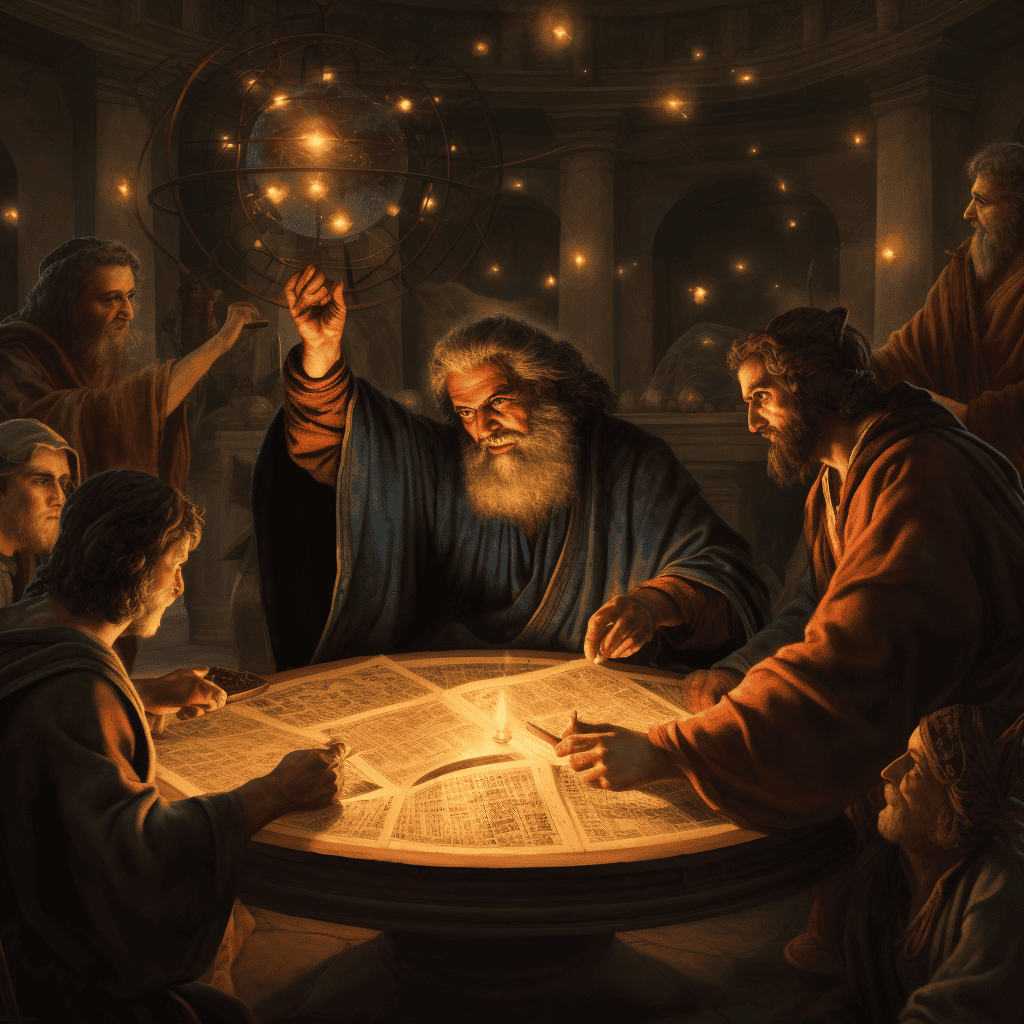
The Hellenistic period in ancient Greece (approximately 323 BCE to 31 BCE) marked a significant turning point for astrology, particularly the development of horoscopic astrology. During this era, the Greeks began to focus on individual birth charts, laying the groundwork for the personalized astrological readings we are familiar with today.
One key figure in this evolution was the mathematician and astronomer Claudius Ptolemy (c. 100–170 CE), who lived in the Roman-era Hellenistic period. Ptolemy’s work “Tetrabiblos” became a foundational text in the history of astrology. In this influential work, Ptolemy outlined the principles of horoscopic astrology, emphasizing the positions of the planets and their significance at the time of a person’s birth.
The horoscope, derived from the Greek words “hora” (hour) and “skopos” (observer), refers to a snapshot of the celestial configurations at a specific moment. Ptolemy and his contemporaries developed the idea that the positions of the Sun, Moon, and planets at the exact time of an individual’s birth could provide insights into their character, fate, and life events.
The zodiac, another crucial component of horoscopic astrology, was divided into twelve signs, each associated with specific personality traits and characteristics. The Ascendant (rising sign), Midheaven, and the positions of the planets within these signs were interpreted to create a detailed astrological profile.
The Hellenistic period saw the synthesis of Babylonian, Egyptian, and Greek astrological traditions, resulting in a more sophisticated and individual-focused approach. This laid the groundwork for the subsequent development of astrology throughout the Roman Empire and into the medieval and Renaissance periods, where it continued to evolve and adapt to different cultural contexts. The rise of horoscopic astrology in Hellenistic Greece marked a crucial milestone in the history of astrology.
The History of Astrology: Astrology in Ancient Rome
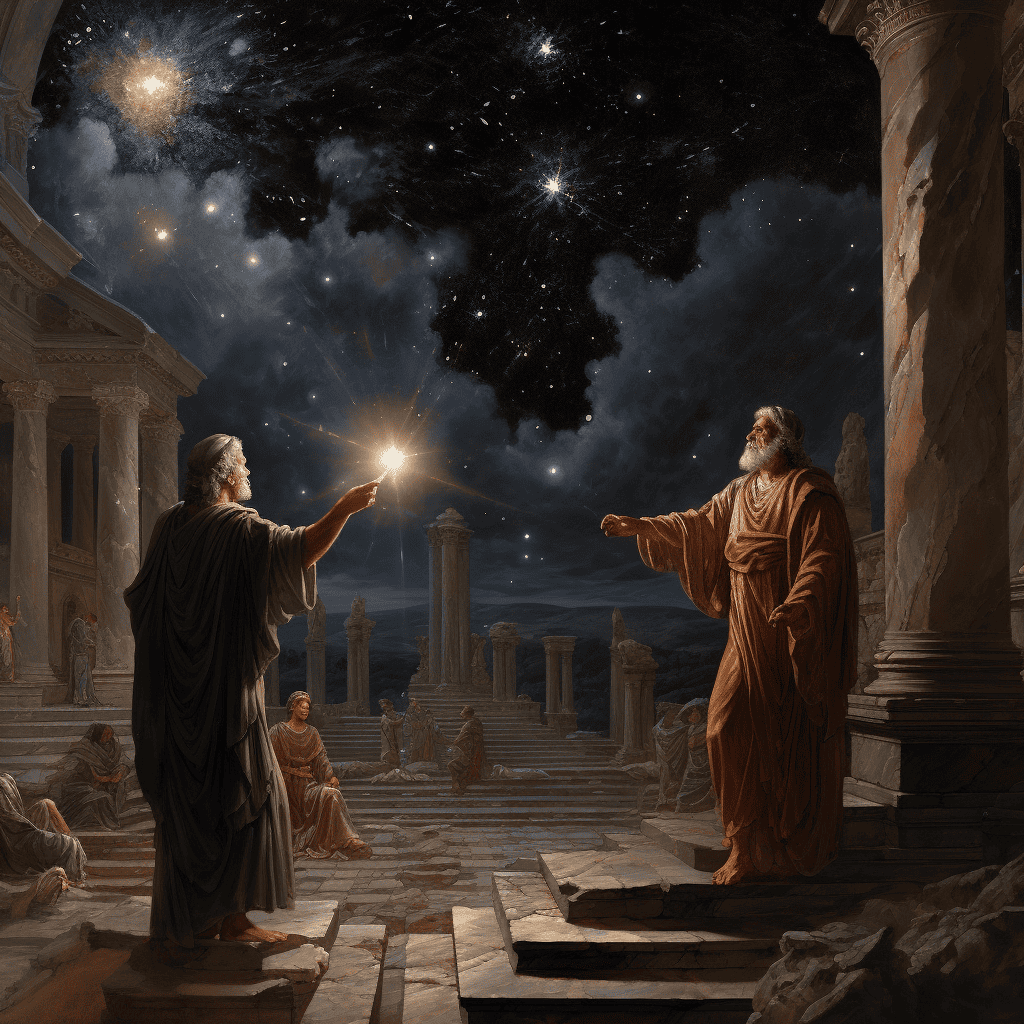
Astrology in ancient Rome borrowed heavily from Greek and Hellenistic traditions, evolving into a distinct form that reflected Roman cultural and political values. The Romans were introduced to astrology during the Hellenistic period when Greece heavily influenced Roman intellectual and cultural life.
Roman leaders and elites, much like their Greek counterparts, consulted astrologers for guidance in matters of state and personal affairs. Astrology became intertwined with political decisions, military campaigns, and even the selection of auspicious dates for significant events. Notably, Julius Caesar was said to have been warned by an astrologer about the Ides of March, though the accuracy of this historical account is debated.
The introduction of Egyptian and Babylonian astrological practices further enriched the Roman astrological landscape. The Romans embraced the concept of the zodiac, with each of the twelve signs associated with specific traits and characteristics. Horoscopes, individual birth charts, gained popularity among both the aristocracy and the general population.
One key figure in Roman astrology was the astrologer Thrasyllus, who served as the personal astrologer to Emperor Tiberius. Thrasyllus’ influence on imperial decisions showcased the significance of astrology in Roman political life.
As Rome expanded its empire, it absorbed diverse astrological traditions from conquered regions. The Roman adaptation of astrology became more syncretic, incorporating elements from different cultures into a cohesive system.
However, the history of astrology faced periods of both acceptance and skepticism in Rome. While some emperors embraced astrological advice, others, like Augustus, were more critical. The philosopher Seneca, despite being a tutor to Emperor Nero, expressed skepticism about the deterministic nature of astrology.
Overall, astrology persisted in ancient Rome, influencing various aspects of Roman society, from personal decision-making to political and military strategies. Its continued popularity laid the groundwork for the transmission of astrological knowledge to subsequent civilizations, contributing to the enduring legacy of this ancient practice.
The History of Astrology: Astrology in the Middle Ages in Europe
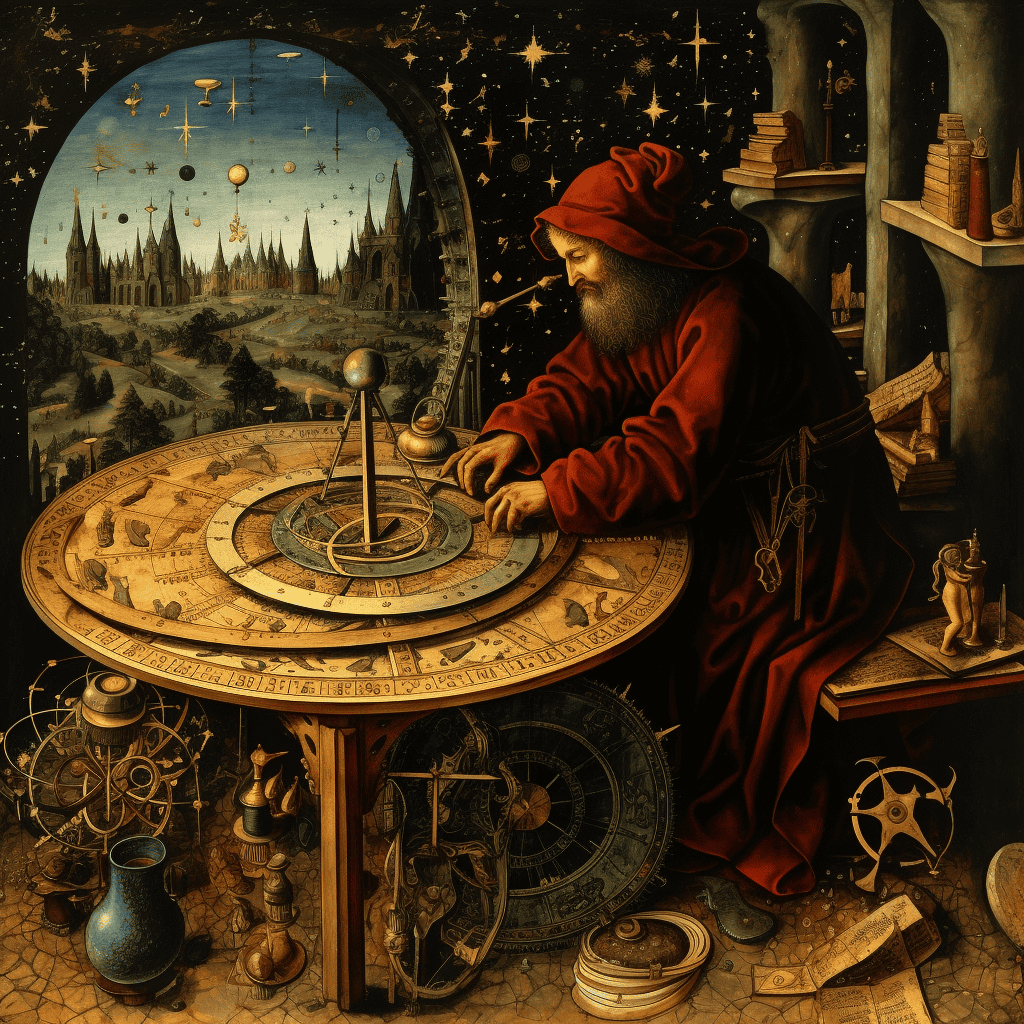
The History of astrology in the Middle Ages in Europe witnessed a complex and multifaceted history, marked by periods of both acceptance and skepticism. Here are some key aspects of astrology during this time:
- Integration with Medieval Philosophy: During the early Middle Ages, astrology was closely tied to medieval philosophy, particularly the Scholastic tradition. Influential thinkers like Albertus Magnus and Thomas Aquinas incorporated astrological principles into their philosophical frameworks, viewing the celestial bodies as part of the divine order.
- Astrology and Medicine: Astrology was often intertwined with medieval medicine. Physicians believed that the positions of celestial bodies influenced the health and temperament of individuals. Medical texts from this period frequently contained astrological advice for diagnosis and treatment.
- Courtly Astrology: Astrology gained favor among the medieval nobility and royalty. Court astrologers were often employed to provide advice on matters ranging from political decisions to personal affairs. Monarchs sought astrological guidance for matters such as choosing auspicious times for battles, marriages, and coronations.
- Universities and Scholarly Pursuits: Astrology was studied in medieval universities as part of the liberal arts curriculum. However, its status varied; at times, it faced opposition from religious authorities who deemed it incompatible with Christian doctrine. Nonetheless, some universities, like the University of Paris, included astrology in their academic offerings.
- Arab and Byzantine Influences: During the medieval period, European scholars were exposed to the works of Islamic and Byzantine astrologers. Translations of Arabic texts, including those by influential figures like Albumasar (Abu Ma’shar), enriched European astrological knowledge.
- Astrology and the Church: The relationship between astrology and the Christian Church was complex. While some ecclesiastical authorities endorsed or tolerated astrology, others condemned it, especially when it involved predictions of individual destinies, which was seen as challenging divine providence.
- Hermetic and Alchemical Connections: Astrology was also linked to Hermeticism and alchemy during the Middle Ages. Practitioners believed in the interconnectedness of the cosmos and sought esoteric knowledge through the study of astrology, alchemy, and mystical traditions.
- Decline and Renaissance Revival: Toward the end of the Middle Ages, astrology faced increasing criticism from both religious and scientific circles. However, the Renaissance witnessed a revival of interest in classical knowledge, including astrology. Scholars like Marsilio Ficino and Giovanni Pico della Mirandola integrated astrology into their broader philosophical and mystical systems.
In summary, astrology in the Middle Ages in Europe experienced a dynamic interplay between acceptance and skepticism, with its influence evident in various spheres of medieval life, from philosophy and medicine to the courts of nobility and academic institutions. The subsequent Renaissance period would see the history of astrology undergo further transformations and renewed interest.
Astrology During the 19th and 20th Centuries
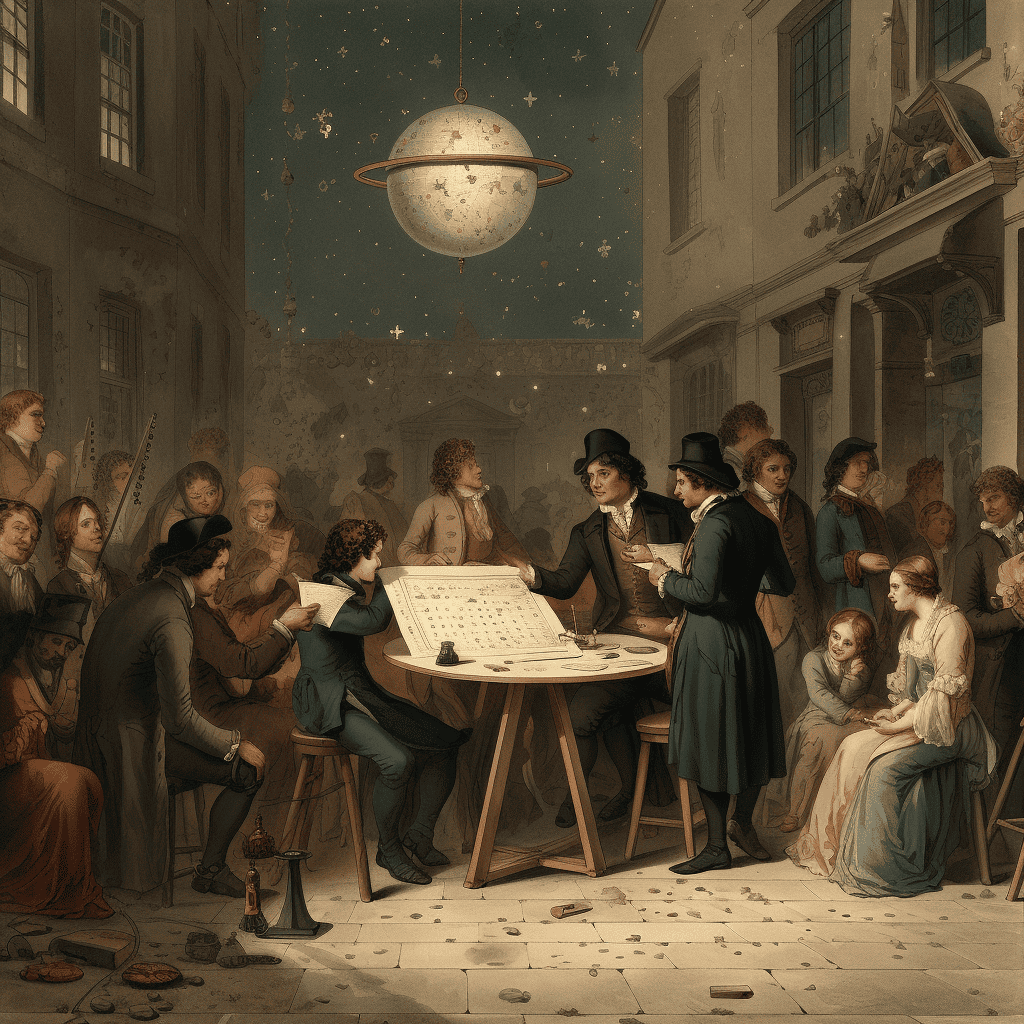
Astrology in the 19th and 20th centuries experienced a range of developments, blending traditional practices with new philosophical and psychological perspectives. Here are some key aspects of astrology during this period:
19th Century:
- Revival and Reinterpretation: The 19th century witnessed a revival of interest in astrology, partly influenced by the broader spiritual and esoteric movements of the time. As Western societies underwent significant cultural shifts, individuals sought alternative systems of meaning and self-discovery, turning to astrology for guidance.
- Theosophy and Occultism: Theosophy, a spiritual and philosophical movement founded by Helena Blavatsky, incorporated astrological concepts into its teachings. Theosophists believed in the interconnectedness of spiritual and cosmic forces, contributing to the integration of astrology into broader occult practices.
- Psychological Astrology: Towards the end of the 19th century, astrology began to be approached from a psychological perspective. Pioneers like Alan Leo emphasized the psychological aspects of astrology, viewing it as a tool for self-awareness and personal development. This laid the groundwork for the later development of psychological astrology in the 20th century.
20th Century:
- Carl Jung and Psychological Astrology: The renowned Swiss psychiatrist Carl Jung explored astrology in the context of analytical psychology. Jung saw astrology as a symbolic system reflecting archetypal patterns in the human psyche. His work influenced the development of psychological astrology, emphasizing the symbolic and transformative potential of astrological insights.
- Popularity and Mainstream Acceptance: Astrology gained widespread popularity in the mid-20th century, becoming a cultural phenomenon. Newspapers and magazines started featuring horoscopes, and astrology became a topic of public interest. Many individuals turned to astrology for guidance in matters of love, career, and personal development.
- New Age Movement: The New Age movement of the late 20th century embraced astrology as part of its holistic and spiritual worldview. Astrology was integrated with other metaphysical practices, such as crystal healing, meditation, and alternative medicine. This era saw the emergence of a more eclectic and spiritually oriented astrology.
- Astrology and Technology: With the advent of the internet in the late 20th century, astrology became more accessible to a global audience. Online platforms offered astrological content, services, and interactive tools, democratizing the practice and fostering community engagement.
- Evolution of Astrological Schools: Different astrological schools emerged, each with its unique approach. Traditional astrology, evolutionary astrology, and modern psychological astrology coexisted, reflecting the diversity of perspectives within the astrological community.
- Scientific Skepticism: Despite its popularity, astrology continued to face skepticism from the scientific community. Critics argued that astrological principles lacked empirical evidence, leading to debates about its legitimacy and efficacy.
In summary, the 19th and 20th centuries witnessed astrology’s revival, transformation, and integration into mainstream culture. The exploration of psychological dimensions and the influence of cultural and spiritual movements shaped astrology into the diverse and multifaceted practice seen today.
Carl Jung and Astrology
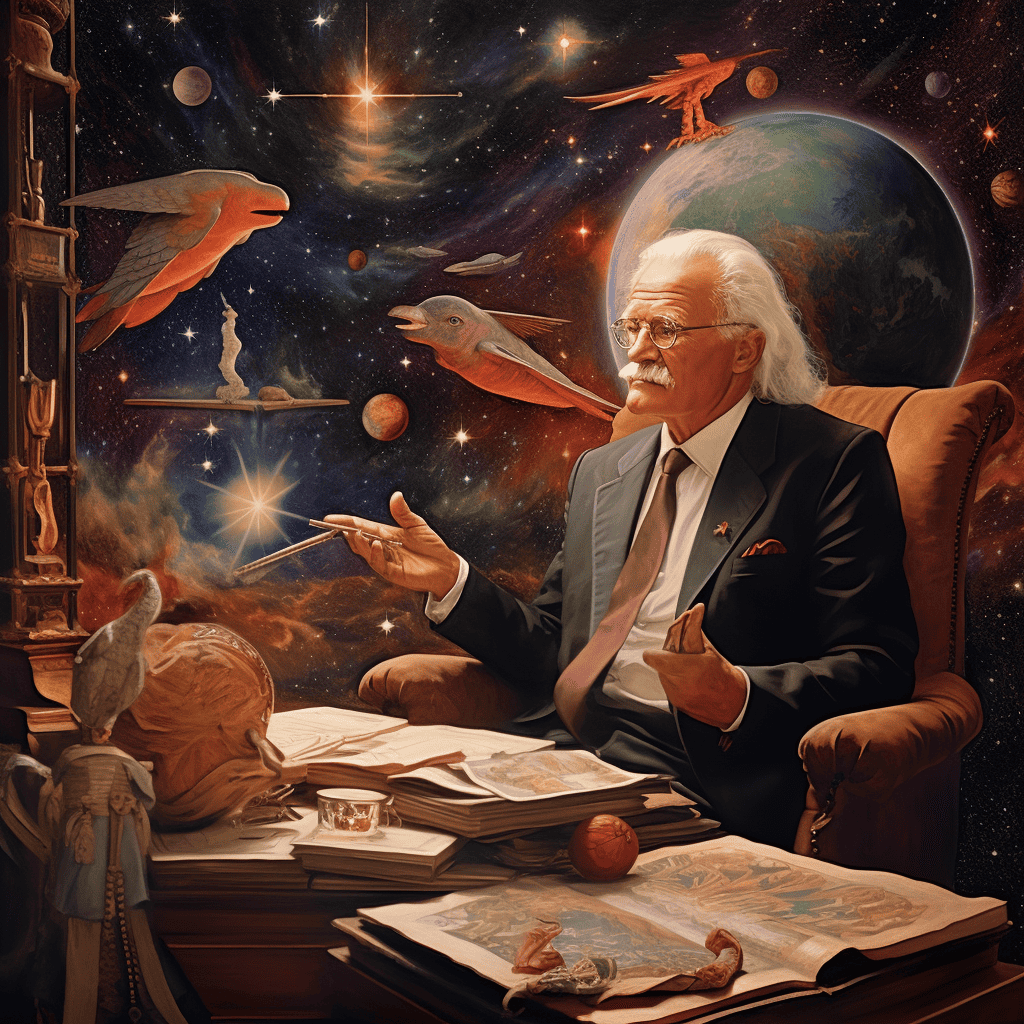
Carl Jung, the Swiss psychiatrist and founder of analytical psychology, had a complex and nuanced relationship with astrology. While Jung was not an astrologer and did not develop a systematic astrological theory, he acknowledged the symbolic and archetypal aspects of astrology, seeing it as a reflection of deeper psychological processes.
Here are key points regarding Carl Jung and astrology:
- Archetypes and Symbols: Jung proposed the concept of archetypes, which are universal, collective symbols and themes present in the human psyche. Astrology, with its rich symbolism and archetypal images associated with planets, signs, and houses, resonated with Jung’s ideas about the collective unconscious.
- Synchronicity: Jung introduced the concept of synchronicity, suggesting meaningful coincidences between inner psychological states and external events. He saw astrology as an example of synchronicity, where the movements of celestial bodies align with psychological processes, offering symbolic insights.
- Psychological Astrology: Jung’s interest in astrology was primarily psychological. He believed that astrological symbols had a psychological impact on individuals, tapping into the deeper layers of the unconscious. He explored the potential for self-discovery and individuation through the contemplation of astrological symbols.
- Personal Experience: Jung admitted to exploring his own astrological chart and those of his patients. He found that astrological insights could be a valuable tool for self-reflection, fostering a deeper understanding of one’s personality and the potential for personal growth.
- Limitations of Scientific Verification: While Jung recognized the psychological value of astrology, he was cautious about claiming its scientific validity. He acknowledged the lack of empirical evidence to support astrological principles and emphasized the need for careful interpretation rather than deterministic predictions.
- Collective Unconscious and Zodiacal Archetypes: Jung explored the connection between the zodiacal archetypes and the collective unconscious. He suggested that the symbolism inherent in astrology could tap into universal themes that resonate across cultures and time periods.
- Critique of Sun Sign Astrology: Jung was critical of simplistic Sun sign astrology that reduces individuals to generic personality traits based solely on their Sun sign. He emphasized the importance of considering the entire birth chart for a more nuanced and accurate understanding.
In summary, Jung’s engagement with astrology was more aligned with its symbolic and psychological dimensions rather than endorsing it as a predictive science. His work laid the groundwork for the development of psychological astrology, emphasizing the potential for introspection, self-awareness, and individuation through the contemplation of astrological symbols.
Timeline of the History of Astrology!
Astrology in the Modern World

Astrology in the contemporary world is a dynamic and multifaceted phenomenon that spans various cultures, beliefs, and practices. While it remains a subject of debate between skeptics and enthusiasts, astrology has found a resilient and evolving presence in the 21st century. Here are several facets that capture the essence of astrology in the world today:
- Popularity and Accessibility: Astrology has experienced a resurgence in popularity in recent decades, driven in part by the ease of access to astrological content through the internet and social media. Online platforms offer horoscopes, birth chart calculators, and personalized readings, making astrology more accessible to a global audience.
- Media Influence: Astrology has become a mainstream feature in popular culture. Newspapers, magazines, and websites frequently feature horoscopes, catering to individuals curious about their astrological forecasts. Astrologers and astrology-themed content creators on social media platforms have gained substantial followings, contributing to the democratization of astrological knowledge.
- Diversity of Approaches: The contemporary astrological landscape encompasses a wide range of approaches. Traditional astrology, modern psychological astrology, Vedic astrology, and other specialized systems coexist. Astrologers may emphasize predictive techniques, psychological insights, or spiritual dimensions, catering to diverse preferences and beliefs.
- Psychological Astrology: The influence of Carl Jung’s ideas on psychological astrology remains prominent. Many contemporary astrologers integrate psychological insights into their practice, using astrology as a tool for self-discovery, personal development, and understanding the dynamics of relationships.
- Technology and Astrology Apps: Technology has played a significant role in the modernization of astrology. Astrology apps and websites offer users the ability to generate birth charts, receive daily horoscopes, and explore astrological insights with just a few clicks. These tools have contributed to the integration of astrology into everyday life.
- Astrology in Spirituality: Astrology has found a place within the broader context of contemporary spirituality. Some individuals turn to astrology for guidance in navigating life’s challenges, seeking a sense of purpose, and connecting with a larger cosmic narrative. Astrology often intersects with other spiritual practices and holistic well-being approaches.
- Astrology and Skepticism: Skepticism about the scientific validity of astrology persists, with critics challenging its empirical foundations. While astrology continues to thrive among enthusiasts, a divide exists between those who view it as a meaningful tool for self-reflection and those who dismiss it as pseudoscience.
- Professional Astrology: Professional astrologers offer services ranging from individual consultations to workshops and educational resources. Certification programs and schools provide formal training for those interested in becoming astrologers, contributing to the professionalization of the field.
- Astrology and Cultural Influences: Astrology’s impact varies across cultures and regions. In some societies, it remains deeply integrated into daily life, while in others, it may be more of a niche interest. Cultural attitudes toward astrology often reflect broader perspectives on spirituality, science, and the search for meaning.
In conclusion, astrology in the contemporary world reflects a diverse and evolving landscape. Its popularity, accessibility through technology, and integration into various aspects of culture and spirituality contribute to its enduring presence in the 21st century. While debates about its scientific validity continue, astrology remains a fascinating and influential aspect of human inquiry and self-exploration.
Brief Overview of Astrology Around the World
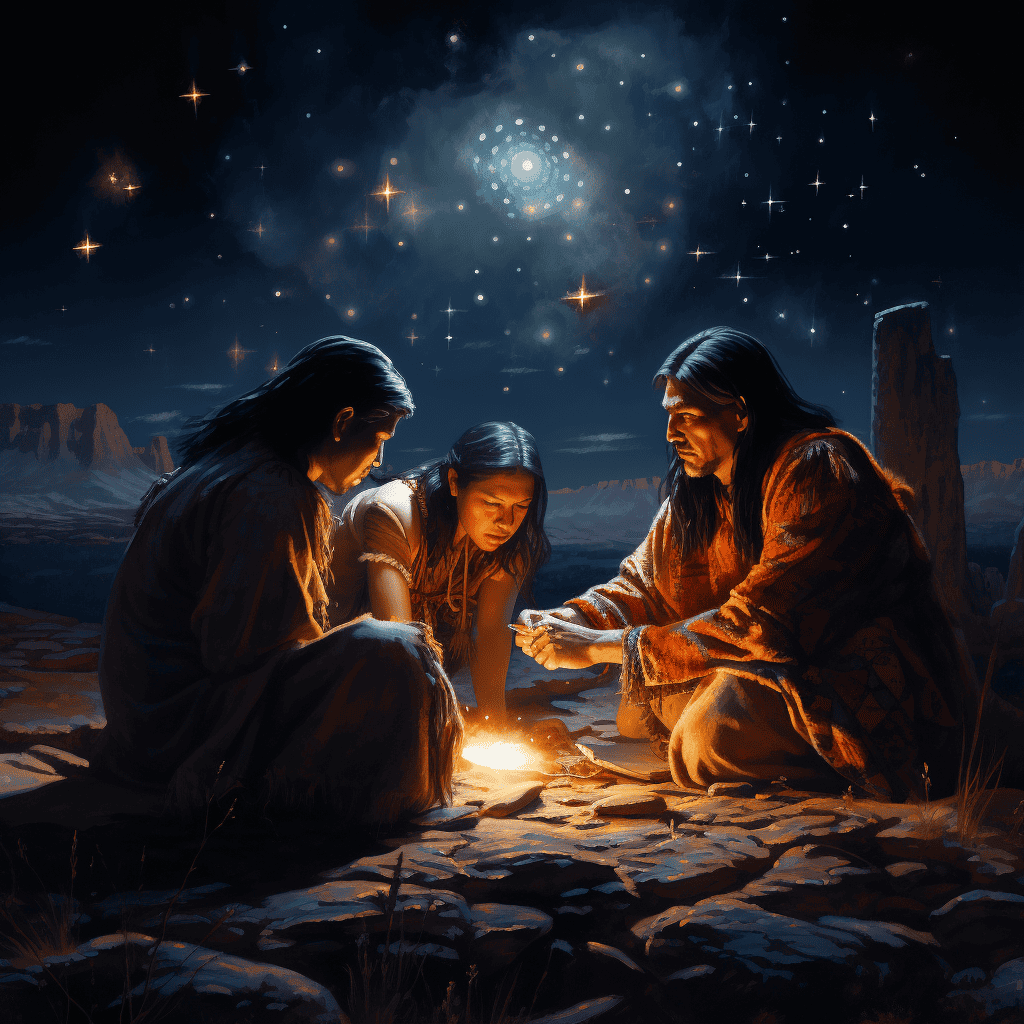
Astrology has a long history and diverse manifestations in cultures around the world. While the specific traditions and practices vary, many societies have developed their own astrological systems, incorporating celestial observations into cultural, religious, and practical aspects of life. Here’s a brief overview of astrology in different cultures:
- Chinese Astrology: Chinese astrology is deeply rooted in ancient Chinese philosophy, particularly Daoism and Confucianism. The Chinese zodiac, with its twelve animal signs, is a key component. Each year is associated with an animal, and people believe that their personalities and destinies are influenced by the animal of their birth year. Chinese astrology also considers the five elements (wood, fire, earth, metal, water) and their cyclical interactions.
- Mayan Astrology: The ancient Mayans developed a sophisticated astrological system, focusing on the movements of celestial bodies, particularly Venus. Mayan priests used elaborate calendars, including the Tzolk’in and Haab’, for divination and to plan agricultural activities, ceremonies, and warfare.
- Native American Astrology: Various Native American cultures have their own astrological systems. The Lakota Sioux, for example, have a star knowledge system that integrates celestial observations with cultural and spiritual practices. The Pawnee tribe had an intricate understanding of the stars, using them for agricultural and ceremonial purposes.
- Egyptian Astrology: Ancient Egypt had its own form of astrology, influenced by Babylonian and Greek traditions. Egyptian priests observed the movements of the stars and associated them with the deities. The Decans, a division of the zodiac into 36 groups of stars, played a significant role in Egyptian astrology.
- Islamic Astrology: Islamic astrology, also known as Arabic or Persian astrology, emerged during the Islamic Golden Age. Scholars translated Greek, Persian, and Indian astrological texts, contributing to the development of Arabic astrology. The astrolabe, an instrument for studying the positions of celestial bodies, was widely used in Islamic astronomy and astrology.
- Mesoamerican Astrology: In addition to the Maya, other Mesoamerican cultures, such as the Aztecs, developed their own astrological systems. The Aztec Sun Stone, also known as the Aztec Calendar, is an iconic example. It incorporates various astrological elements to represent cycles of time and the divine order of the universe.
- African Astrology: Different African cultures have their unique astrological traditions. In West Africa, for instance, the Akan people use the Akan calendar, which combines astrology with a seven-day week and is associated with personality traits. Astrology also plays a role in various divination practices across the continent.
- Polynesian Astrology: Polynesian cultures, including the Maori in New Zealand and the Hawaiians, developed their own celestial navigation systems. The star patterns were used for navigation across the vast Pacific Ocean. The Pleiades, in particular, held cultural and navigational significance.
- Western Astrology: Western astrology, also known as horoscopic astrology, is rooted in ancient Mesopotamian, Greek, and Roman traditions. It gained prominence during the Hellenistic period and evolved through various historical periods, including the Renaissance. Western astrology includes the zodiac, planets, and houses, and is widely practiced in Western cultures today.
While each culture’s astrology has unique features, there are common themes of using celestial observations for practical, religious, and personal purposes. Astrology continues to be a fascinating aspect of humanity’s diverse cultural heritage.
Astrology Today

- Increased Interest: Astrology has seen a resurgence in popularity in recent years, especially among younger generations. The accessibility of astrological content online, including horoscopes, birth chart calculators, and astrology-related social media accounts, has contributed to this renewed interest.
- Social Media Impact: Astrology has found a significant presence on social media platforms. Astrologers and astrology enthusiasts share daily horoscopes, astrological insights, and conduct live readings. Platforms like Instagram, Twitter, and TikTok have become hubs for astrological discussions and content.
- Wellness and Self-Discovery Trends: The contemporary interest in wellness and self-discovery has contributed to the popularity of astrology. Many individuals turn to astrology as a tool for gaining insights into their personalities, relationships, and life paths. Astrology is often viewed as a complementary practice to other wellness activities.
- Celebrities and Influencers: The endorsement of astrology by celebrities and influencers has further popularized the practice. Public figures openly discussing their astrological signs, experiences with astrology, or even consulting astrologers has helped normalize the interest in celestial insights.
- Online Platforms and Apps: The advent of astrology apps and websites has made astrological information easily accessible. These platforms offer personalized horoscopes, birth chart interpretations, and astrological guidance, catering to a broad audience.
- Cultural and Lifestyle Integration: Astrology has become integrated into modern lifestyle and culture. Many people incorporate astrological insights into decision-making, such as choosing auspicious dates for events or making career decisions based on their birth charts.
- Diversity of Astrological Practices: Various astrological traditions, including Western astrology, Vedic astrology, and others, coexist, providing a diverse range of astrological perspectives. Individuals may explore different traditions based on personal preferences and cultural backgrounds.
For the most recent and specific statistics on the number of people following astrology, you may want to refer to market research reports, surveys, or studies conducted by relevant organizations. Additionally, trends in astrology can evolve, so staying updated with recent data would provide a more accurate understanding of the current landscape.
